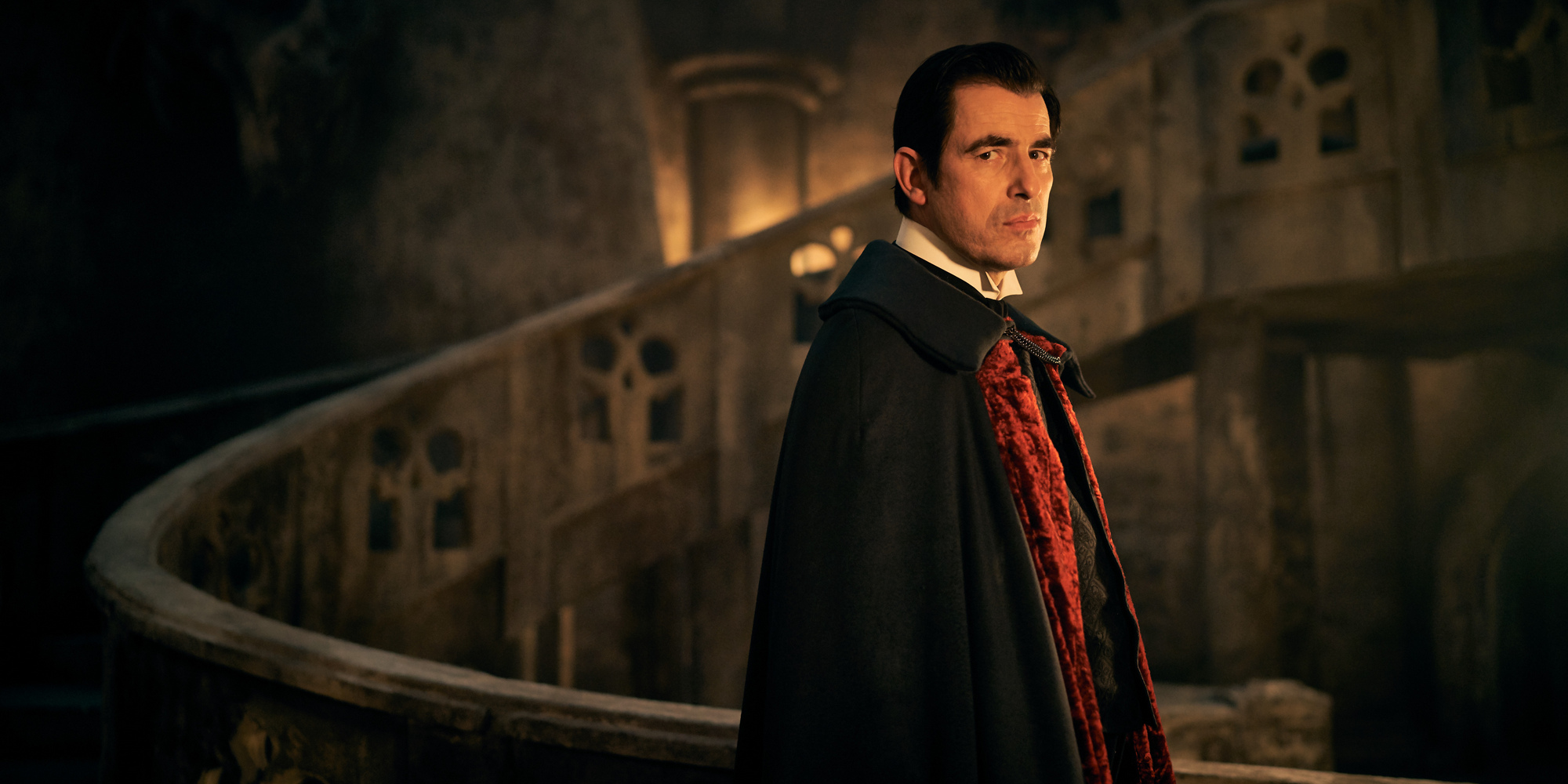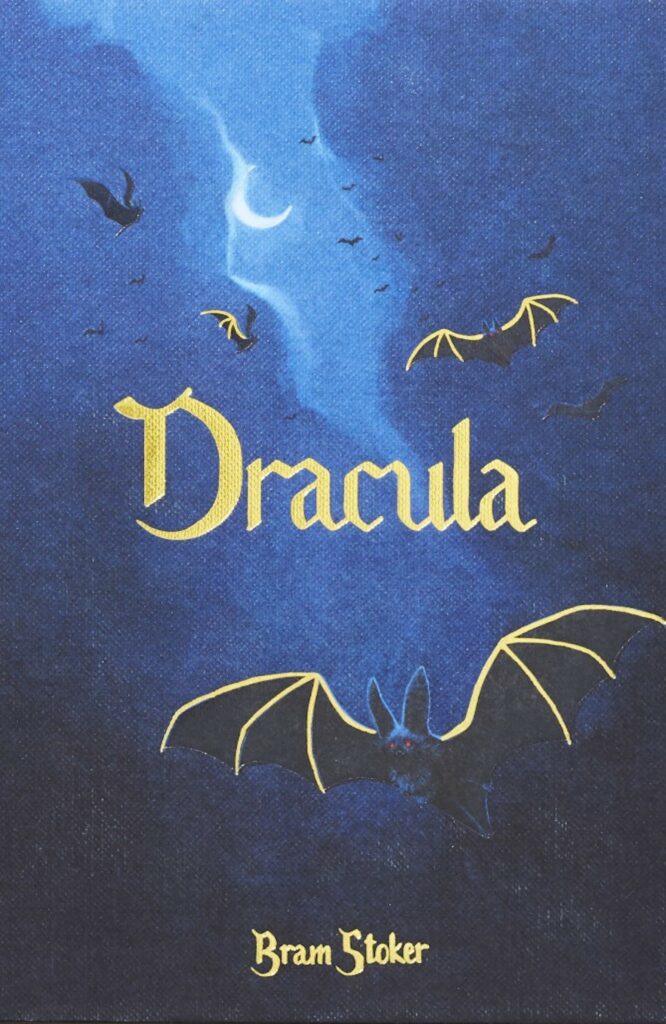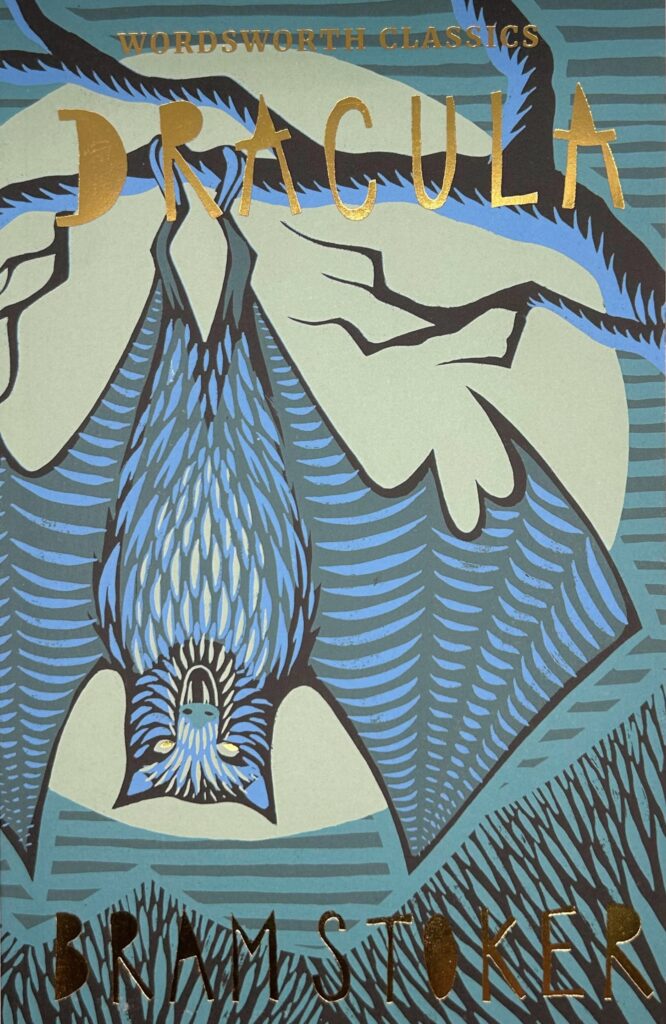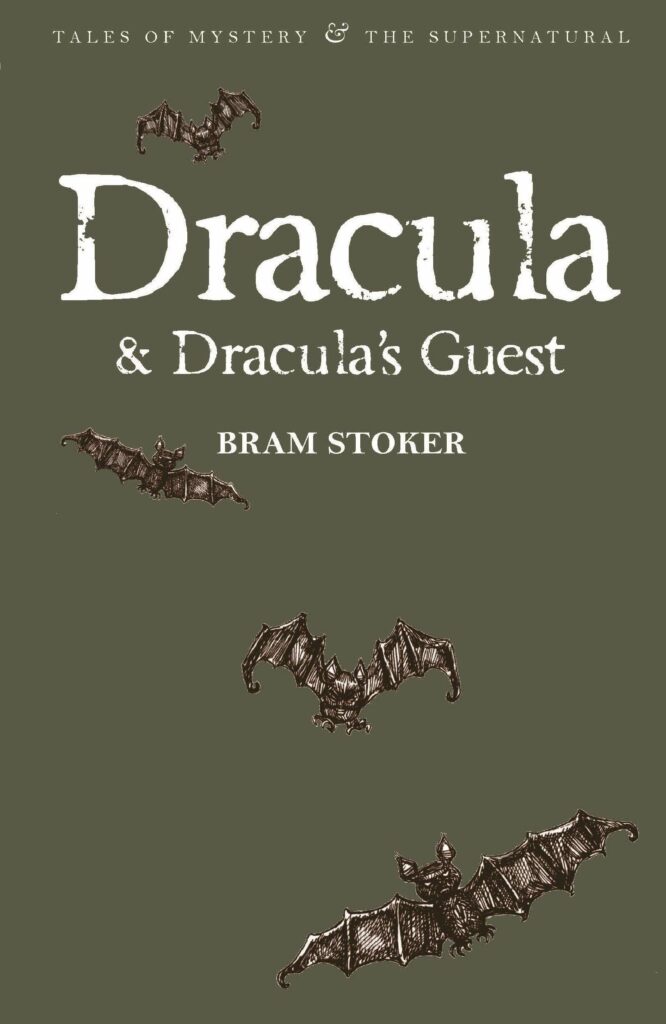
‘Dracula’ reviewed
A Dracula that feels the pulse of the 21st century? Sally Minogue considers the BBC One adaptation of Bram Stoker’s classic novel.
It’s not easy taking notes with your hands in front of your eyes, but as it happens I’ve had a bit of practice, having once been a notetaker in a course on Horror film – so I know the tropes. And so do Mark Gatiss and Steven Moffat: as one would expect from the creators of Sherlock, this Dracula is chock-full of literary and cinematic references, self-references, and references back and forth across its own ‘text’. That could get a bit wearisome, but no doubt for its target audience it all adds to the glee. I couldn’t shake the thought that I’d seen an early James Bond, probably Sean Connery, come out of the sea fully dressed in a dinner suit, à la the brilliant final scene of Dracula Part 2, and spent fruitless ages searching for it on my phone. Yes, even Luddite me. I had to satisfy myself with having noticed the thinly veiled Colin Firth/Darcy wet shirt moment. Those more steeped in Gatiss and Moffatt will have picked up all their clues and cues; somehow they managed to create in my mind one that wasn’t even there. Not a surprising one, though; episode 2 could have been one long audition for the new Bond – or the new Bond directors.
So, with all its imaginative leaps, its handsome production values, and its authors’ customary ability to create an appetite which they then richly feed – was this Dracula any good? Immediately after episode one, it was hugely acclaimed by both cold-eyed reviewers and the wider Twitterati. And I’m not going to quibble pointlessly about the myriad ways it departs from Bram Stoker’s 1897 novel (though I couldn’t help thinking of missed opportunities). To all intents and purposes, this was a new work, a new Dracula – in Gatiss’s spot-on description, both ‘faithful and faithless’ to the novel. At its creative heart is the desire ‘to make Dracula the central character of his own story’, and in that they are triumphant. Claes Bang as the shape-shifting Count dominates throughout, partly because of his physical presence, enhanced at times by make-up and special effects, but most strongly felt when he is most normally himself. We really can believe that he’s 400 years old. Handsome in a vulpine way, his face and body (I particularly noticed his hands) speak of age-old experience. He’s also part matinée idol, reaching back to then-exotic European actors such as Rudolph Valentino, Charles Boyer and Louis Jourdan (whose 1977 television personification of Dracula Gatiss notes as a major influence) – actors who, in a less globalised age, carried the whiff of danger, the scary allure of abroad. Some of their appeals came from an element of the feminine (as we’d have called it then), not easily available to the standard masculine star of that time.
And so to the much-signalled queer reading of this Dracula, cleverly underplayed in the actual watching. It’s there; it’s natural. As Steven Moffat reminds us, Dracula doesn’t have sex with his victims, he drinks their blood; he’s not bisexual, ‘he’s bi-homicidal’. And he’s not fussy – though he does show a little disdain, even a touch of self-contempt in taking Lord Ruthven, a parody Bosie figure a bit too obvious for the discerning Count. His apparent desire for Jonathan Harker, in the highly Gothic first episode, I found less persuasive, but maybe because this episode had the most full-on Hammer horror aesthetic, and Harker was placed centre stage as a victim. Whereas Dracula’s neatly picking his way through his assembled tasting menu in the gloriously titled second episode, ‘Blood Vessel’, seemed more in character, and paradoxically added depth to our understanding of him, as he imbibed (literally) the different strengths of each fellow-traveller. As he puts it, ‘the reds and the whites – the duchess and the deckhand’. One of many sparkling one-liners, in scripts which are fizzing with ludic pleasure.
Dracula’s true amour and counterpart is in fact a woman, Sister Agatha Van Helsing, a performance by Dolly Collins that stands up powerfully to that of Claes Bang. Close to the Count’s match in forensic intelligence, wit, and fearlessness, with none of the softness and passivity of the traditional female victim, Agatha is particularly attractive to him, a double who is both threat and promise. This is another sharply imagined gender twist, with Agatha taking on the role of the original Professor Van Helsing ‘of Amsterdam’, philosopher, metaphysician, advanced scientist – and vampire hunter. The further twist of making Agatha a sceptical nun allows the use of traditional weapons against the vampire (the crucifix and the Bible) alongside her considerable powers of rational thought. Agatha relishes the challenge. When she is questioning Harker and bats swarm around, signalling that ‘he’s here’, her response is ‘how exciting!’
Agatha is also central as a means of narration, initially writing down Harker’s harrowing account of his experiences at Dracula’s castle, which then provides the framework for us as viewers to enter those experiences. We are taken back and forth from past to present, accentuating the contrast between the innocent fresh-faced Jonathan and the shell he has been reduced to. In the second episode, she is interrogator and interrogated, an apparent prisoner of the Count as he tells her of his adventures on the ship Demeter. Here I got a bit lost in the time signatures – are we looking back or forward, as Agatha also figures in the account she is eliciting? These framework narrations are a nod to the novel, which is scrupulous in its intention to give objective documentary evidence to counter the implausibility of the story. Everything in the novel is a document, written or recorded in ‘real time’. In the television version, real-time is a tad difficult to pin down. Familiar as we are with such postmodern shifts, the director of episode two still managed a genuine surprise for the viewer, as Dracula, immaculate in a white dress shirt, emerges from the sea – to be greeted by a helicopter circling overhead and a newly minted Agatha leading the reception party. Welcome to England, and the perfect cliff-hanger.
The inevitable echoes of contemporary migrants seeking shelter on our shores are problematic given that this is a migrant seeking new blood, which might seem to confirm rather than subvert current prejudices. But the makers of Dracula are clearly aware of the political world into which their work emerges. Gatiss liked the Louis Jourdan version because he was definitely not British, and he likes Claes Bang for the same reasons: ‘He’s incredibly tall, dark, handsome – and other.’ Dracula embodies the dark fears of the other that can lead the most reasonable of beings into paranoia and insular retreat. I’d like to think that the audience might be sophisticated enough to see that this is an analysis of paranoia rather than an encouragement of it, but I’m not so sure. Even Agatha says, repeatedly, ‘Don’t invite him in’.
Sadly, at the point when Dracula, and Dracula, enter the twenty-first century, it all falls apart. Just when you’d think these authors would have their surest touch, it deserts them. First, Dracula is allowed to escape from that beach capture in a ridiculous way, all too common in current tv narratives. Then he looks heavy-handed, blundering into suburban environs that he (ludicrously) claims as full of wonders. There are some brief moments of enjoyment as he gets across mobile phones and white goods (an early victim crammed into a fridge), and then toys with the millennial scene. But this third episode ran out of creative steam; even the verbal wit was missing. The name checks from the novel were meaningless, connecting with nothing substantial. And the ending was, frankly, sentimental. Stoker’s Dracula wouldn’t have been seen dead with it.
In my previous blog on the novel, I wondered whether the tv adaptation could plumb the abyss of existential horrors as the novel does. The answer, after seeing all three episodes, is no. Reflecting on the moments when I genuinely had to hide my eyes, they occurred mainly in the first episode; but it was the second episode that for me was truest to the spirit of the novel. Interestingly, audiences fell away after the first episode, from 3.6 million on the first night to 2.85 on the second. If they’d started with the second episode it might have been a different story. I’m not a Freud fan any more than I’m a horror genre fan, but there was plenty of the ‘unheimliche’ in that second episode, moments when we are alienated from our comfortableness in being our human selves and displaced into a sense of the uncanny in existence. There was also plenty of the truly Gothic, the atmosphere created not by bats and blood-letting, but by a ship under full sail under a full moon, and our worst fears at our throats. Sometimes the old tropes are the best.
There’s a current exhibition at the Freud Museum in London, ‘The Uncanny: a Centenary’, running till February 9th, freud.org.uk.
Image: Claes Bang in the title role. Credit: BBC


